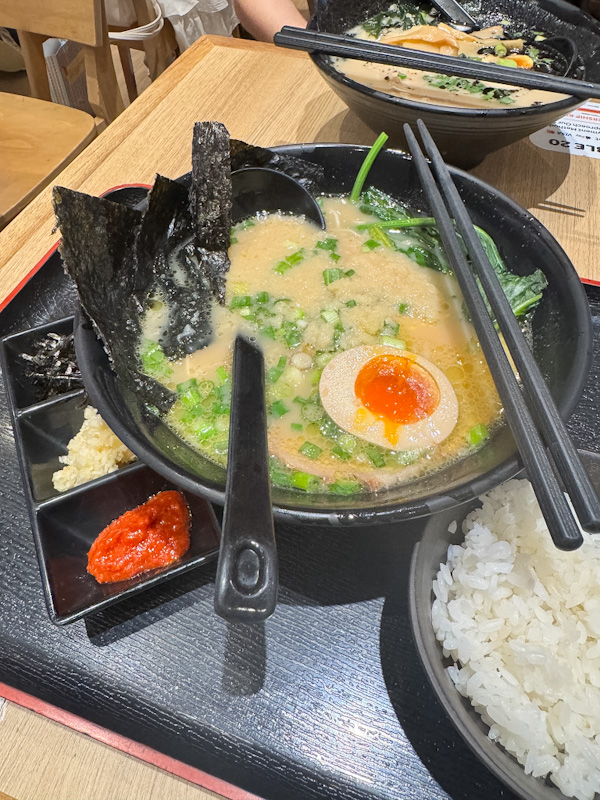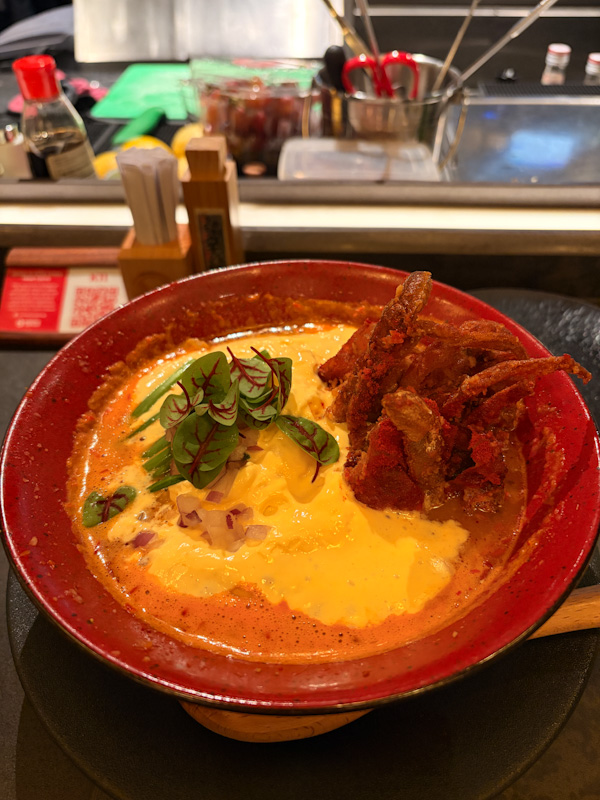WHAT WE ATE
- Keisuke Bak Kut Teh Ramen, 65/100 (24 July 2025, Changi Airport T2)

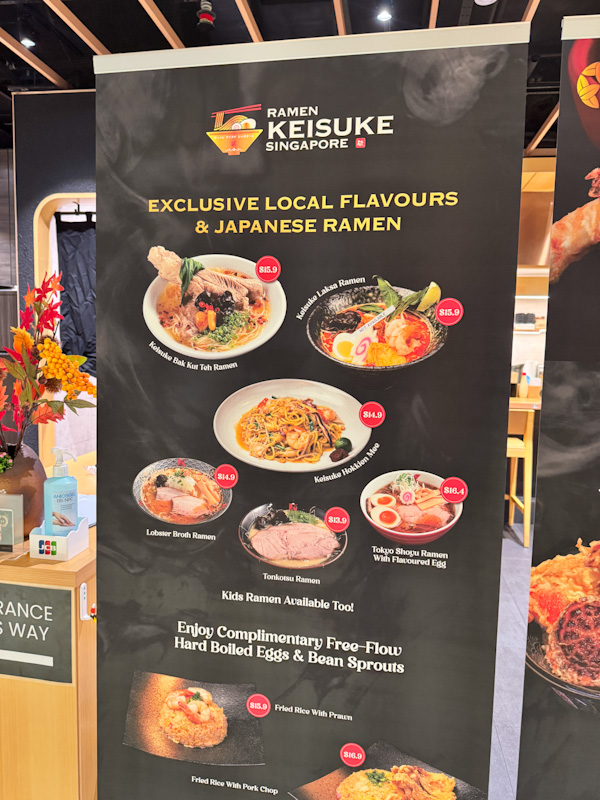
Ramen Keisuke Singapore (Changi T2) is not your average airport dining stop. Beyond its signature tonkotsu ramen Singapore and Tokyo-style shoyu ramen, this outlet stands out as the only Keisuke branch in Singapore to feature local-inspired bowls like Bak Kut Teh Ramen and Laksa Ramen. These aren’t gimmicks—they have roots in culinary storytelling. In fact, the Bak Kut Teh Ramen was originally created for the Singapore-Japanese film Ramen Teh, directed by Eric Khoo, which explored the cultural ties between ramen and Singaporean cuisine. For the movie, Chef Keisuke Takeda collaborated with local food experts to bring the fusion concept to life, blending peppery pork bone broth with ramen noodles, and serving it with pork ribs, black fungus, and youtiao on the side. It was first launched in 2018 as a limited-edition dish at Suntec City, but today, Changi T2 is the only place you’ll find this iconic ramen on the menu.
Beyond that, the Changi outlet offers a curated variety, from black and red spicy tonkotsu to a rich lobster broth ramen, making it a practical yet exciting stop for travelers. If you’re searching for the best ramen in Singapore that marries Japanese precision with Singaporean soul, this Keisuke branch should be on your radar—whether you’re flying out or just craving something different.
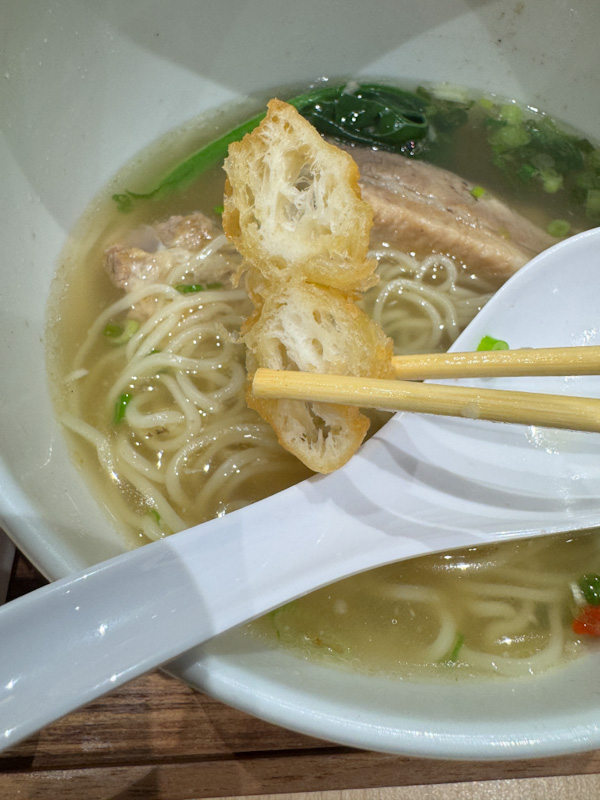
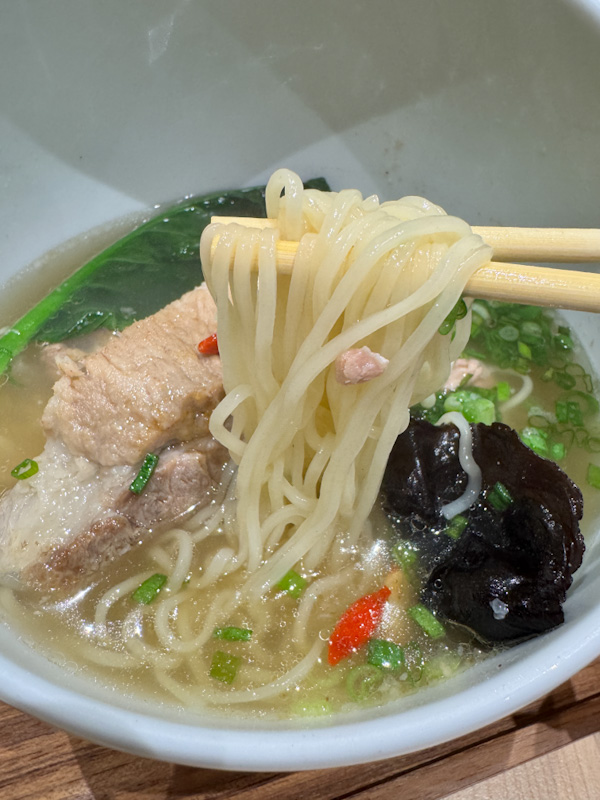
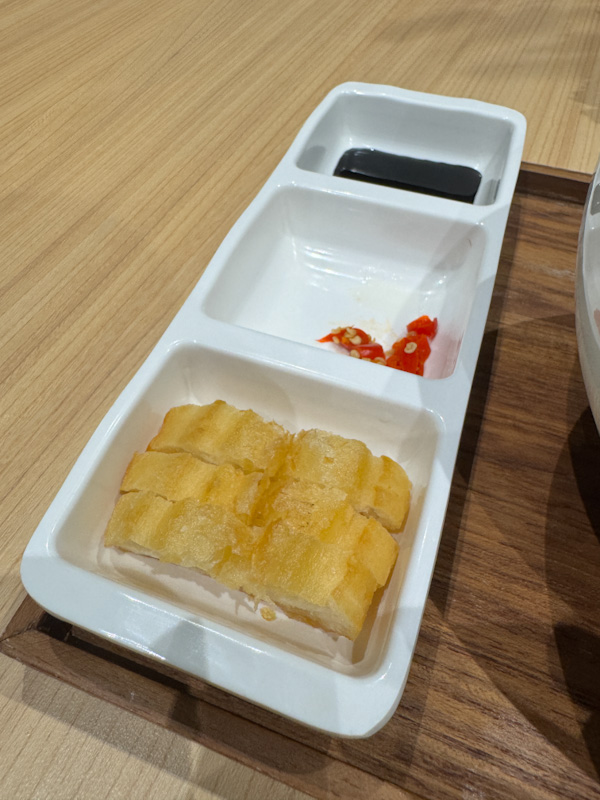
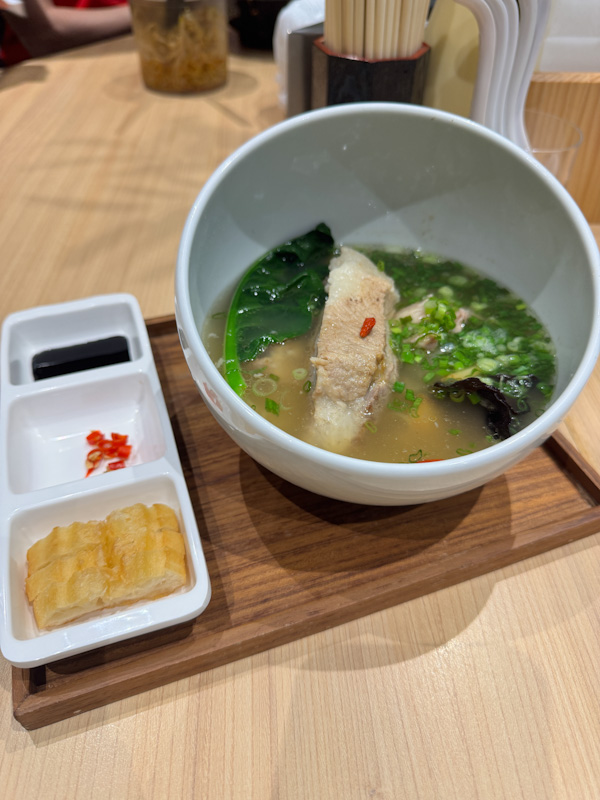
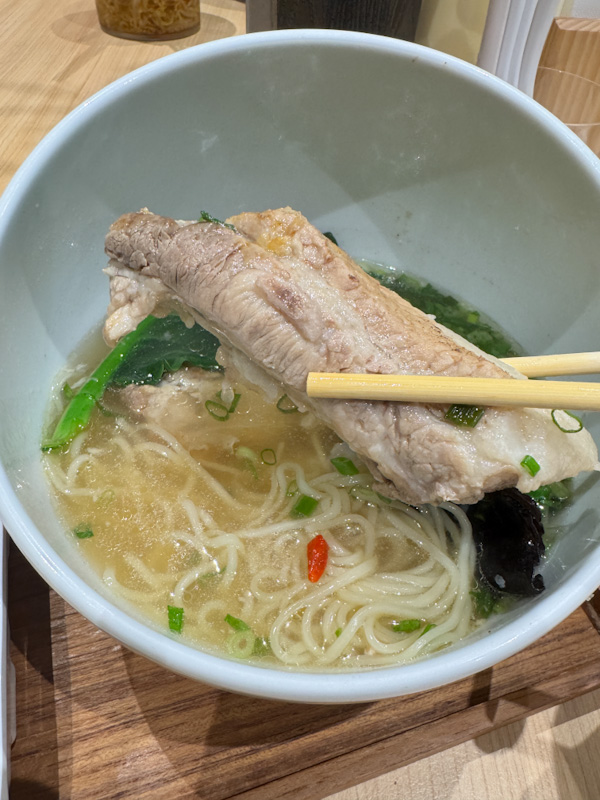
Keisuke Bak Kut Teh Ramen: 65/100
Noodle: 20/35
Medium-thin and straight, the noodles have a faint translucency at first glance. Texture-wise, they’re soft with a touch of spring, but the bite is weak and they tend to cling to your teeth. On the bright side, they carry a pleasant earthy wheat note and absorb the herbal, peppery undertones of the soup well.
Soup: 25/35
The broth opens with a gentle sweetness from the herbal pork base. Moving into the body, it’s warm and savoury with distinct herbal notes layered with a hint of garlic. The finish is marked by peppery warmth—not overpowering—and a subtle trace of what seems like scallion oil that ties it together. Toward the end, when you hit the bottom of the bowl, a tangy bitterness creeps in, reminiscent of metallic undertones. It’s not a dealbreaker but it does pull you out of the experience, making you hesitate before draining the bowl. That said, for someone who grew up eating this dish in its traditional form, I found this ramen surprisingly layered and engaging.
Meat: 15/20
A generous pork rib serves as the hero protein, simmered right in the soup. The cut includes both lean meat and soft, jelly-like fat that peels away easily. The texture is springy, still juicy, and cooked through without drying out—though don’t expect the meat to just slide off the bone. Flavour-wise, it’s lightly savoury with the natural pork taste intact but not overpowering. Pair it with the provided dark sweet soy sauce for the best experience; the sweet-salty balance and slight bitter edge complement the meat beautifully.
Other Toppings: 5/10
- Youtiao: Crisp edges, savoury, not overly oily, and dangerously addictive when dipped in broth.
- Kailan: A single stalk that’s crunchy and bitter. While it’s a common side dish in the local Bak Kut Teh culture, it feels slightly out of place in this ramen context.
- Black Fungus: Crunchy but not much flavor of its own to compliment
Bonus Observation: The bowl design deserves a mention. The 45-degree cut-off rim isn’t just aesthetic—it’s functional. It prevents broth splashes as you wrestle with the pork ribs and hides the less-than-graceful act of gnawing on bones like a T-Rex. Ramen bowl makes a huge difference by the way if you’ve not read my post about it.
Summary
Bak Kut Teh Ramen is an interesting experiment that blends two beloved comfort foods—Singapore’s iconic herbal pork soup and Japan’s ramen culture. While the idea is bold, the execution feels slightly uneven – more Singaporean than a true fusion. The broth is its strongest point, carrying a depth of herbal sweetness and peppery warmth that keeps you curious. The noodles, however, lack bite and lean too soft for my liking, though they do soak up the broth well. The pork rib is generous and satisfying with the soy dip, but it requires a little work on your part.
Is it worth trying? Yes—at least once, especially if you’re a fan of local flavours and open to ramen with a twist. Just don’t expect a transformational ramen experience; this bowl leans heavily toward adapting a local flavor than reinvention of a classic. For purists, it might feel a little out of place. For the curious, it’s a conversation starter and a refreshing break from the usual tonkotsu or shoyu suspects.
DISCLAIMER
One man’s meat is another man’s poison.
Find out more about our palettes and how we evaluate our ramen here. 😉

